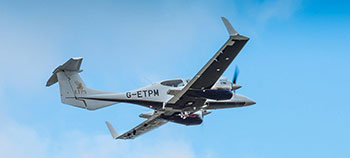-
Team PALADIN partners with Aptima, Inc.
13 Mar 2024
-
Celebrating International Women’s Day 2024
08 Mar 2024
-
February 2024: Futures Lab - Cutting edge technologies and research influencing Defence
29 Feb 2024
-
The Defence Drone Strategy, how do you make the UK a world-leader in uncrewed defence systems?
23 Feb 2024
-
QinetiQ GmbH delivers new Air Combat Training module for Slovenian Armed Forces
20 Feb 2024
Next Generation Test and Evaluation
23/01/2021

In this series of articles, QinetiQ experts outline how a modern Test & Evaluation (T&E) enterprise allows military customers to rapidly and safely experiment with new technologies and processes. This, in turn, enables them to evolve and create new defence capabilities to counter emerging new threats and get new technology and systems into the hands of war-fighters faster.
Introduction
Our militaries are experiencing an unprecedented increase in threats, from unsophisticated swarming unmanned systems to new and novel weapons and hypersonic weapons. In response to this challenge, significant funding is being invested in next generation air, land and maritime capabilities. Increasing system inter-operability is vital between a nation’s own ships, aircraft unmanned air platforms and C4ISTAR assets; and between nations in a coalition scenario.
In order to achieve the necessary assurance in this complex and rapidly developing environment, Test & Evaluation (T&E) needs to adapt. T&E enablers need to evolve to enhance confidence in defence capabilities, through an integrated approach to capability generation and assurance; reducing schedule, risk and cost and enhancing the war-fighter’s capability. This requires a clear strategy. How the broad breadth of defence capability should be verified, validated and optimised, from individual systems to entire complex force units. In response to the continuously changing threat, this validation, verification and optimisation needs to be undertaken in a perpetual cycle, to enable defence capability to evolve through rapid technology insertion, to get relevant technology into the hands of war fighters quicker and maximise defence capability utility in operation. In essence, the challenge is to ensure Defence Capability fitness pre-deployment and maximise sustainment whilst deployed in an increasingly cost effective way.
Test & Evaluation in an Increasingly Complex World
With an unprecedented increase in threats, we are evolving our Test & Evaluation offering through significant investment in next generation T&E. Watch our new animation to find out more about what we can offer our customers to help them achieve advantage.
Modernising Test & Evaluation
Our Test and Evaluation (T&E) expert, Cathy O'Carroll, explains how we're modernising and digitising T&E to ensure it's fit for purpose, future-proof and enables war-fighters to stay ahead of threats by getting capability into their hands as quickly as possible.
